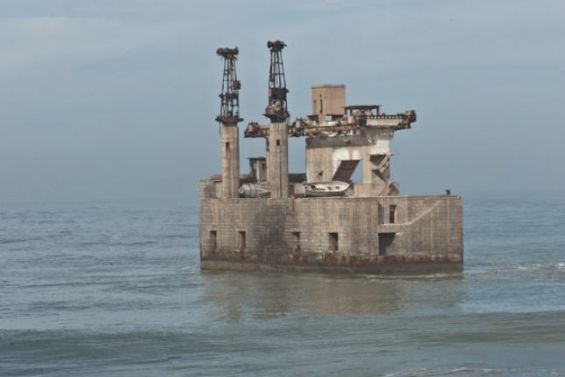Around the southern end of the Sidi Ifni port, a town located in southwest Morocco on the shores of the Atlantic Ocean, a little concrete island can be seen from afar. Erected not far off the shore, the structure used to be a local pride for the city that was once occupied by Spain.
The abandoned structure, built by the Spanish colonizers in the 1960's, is a sea cable car station, of a unique kind. Some history accounts even refer to the Sidi Ifni sea infrastructure as the «only sea cable car system of its kind in the world».

In fact, the little block served as a loading dock for ships coming into the town’s old port to load and unload cargos. However, the facility was based on a uniquely innovative system. Spain thought of this system as an inventive solution for the shallow water near the coast of Sidi Ifni which prevented them from building a regular harbor.
A unique sea cable car station
According to «The Rough Guide of Morocco», a book by Mark Ellingham, the sea-stack was «connected to the mainland by a unique cable car». The latter carried goods as well as ferry passengers from ships at sea to the land and vice versa.
«These goods and people were then carried to land in self-propelled carts supported by giant pylons towering over the port at the shore», magazine and travel company Atlas Obscura wrote in an article about the Sidi Ifni abandoned structure.
The remains of the giant pylons can also still be seen near the port, with missing cables that used to connect said carts.
The cables used to connect the concrete dock to an inland station that is located a few miles in land in the cliffs of the coastal city.

«Nowadays, this defunct hill station looks like a giant crumbling concrete bunker. Rusty remnants of this transport system can still be seen here, including some old rail cars and abandoned cargo», Atlas Obscura explained.
The huge abandoned pylons are known to locals as the «Ancienne gare funiculaire» or the «Old funicular station», which is currently an attraction to tourists and visitors.
Accoridng to local media, the unique transportation system stopped operating and was abandoned by the mid-1970s after the Spanish colonizers left the city.





 chargement...
chargement...













